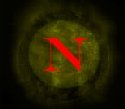 Towards the mid-27th Century, when snuff was first introduced in China, it was believed that it had medicinal qualities and was used to treat the common cold, relieve sore throats, alleviate tooth aches and used as a cure for migraine headaches. Snuff however was not intended nor was it used for all the people of China, but was limited in use and availability to the upper echelons of society. It was mainly used by the elite peoples associated with the Qing Dynasty and the royal court of Beijing. As such, vessels to carry the snuff otherwise known as snuff bottles and or snuff boxes had to be attractive, ornately designed and beautiful to go with one’s social standing.
Towards the mid-27th Century, when snuff was first introduced in China, it was believed that it had medicinal qualities and was used to treat the common cold, relieve sore throats, alleviate tooth aches and used as a cure for migraine headaches. Snuff however was not intended nor was it used for all the people of China, but was limited in use and availability to the upper echelons of society. It was mainly used by the elite peoples associated with the Qing Dynasty and the royal court of Beijing. As such, vessels to carry the snuff otherwise known as snuff bottles and or snuff boxes had to be attractive, ornately designed and beautiful to go with one’s social standing.Snuff bottles are made of a many different materials, shapes, sizes and design. Some of the early snuff bottles are made of ivory, jadeite and even gold. Some were made of coral and other unusual material. However, a lot of snuff bottles were made of glass and because of the medicinal properties of the snuff probably had their beginnings in the apothecary bottles of the time. Many of the snuff bottles were made to fit in the palm one’s hand and had a stopper with a small spoon attached for easy access to the snuff. Many were marked with either maker’s name or a date.
The pictured example of a marked Chinese Imperial snuff bottle was recently sold at Quinn’s Auction Galleries in Falls Church, Virginia for $146,250. However, caution has to be taken when purchasing these types of antiquities because of the many reproductions and
 unscrupulous dealers around the world. A recent search of eBay for Chinese snuff bottles found close to 800 listings, many of them selling for ninety nine cents. The 19th Century white carved jade snuff bottle in the form of two figures sold on eBay for over $1,900.
unscrupulous dealers around the world. A recent search of eBay for Chinese snuff bottles found close to 800 listings, many of them selling for ninety nine cents. The 19th Century white carved jade snuff bottle in the form of two figures sold on eBay for over $1,900.



No comments:
Post a Comment